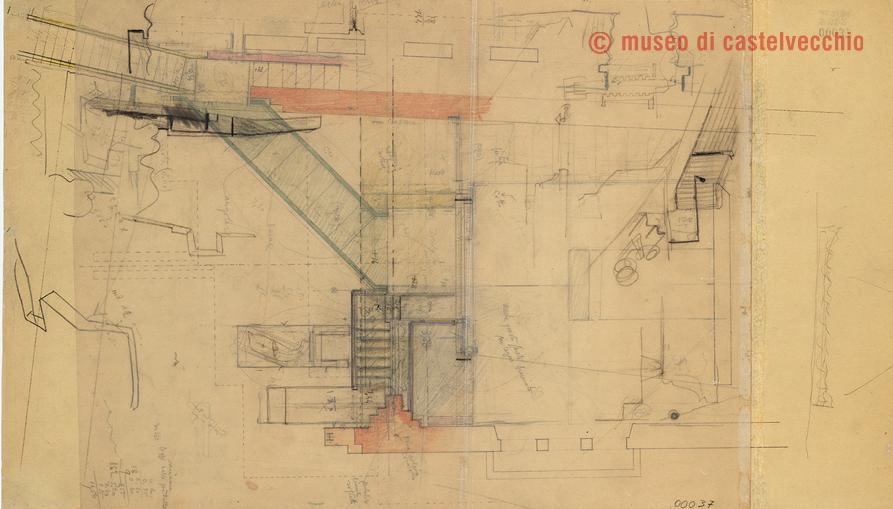
3 minute read
3.3 HAND-EYE-BRAIN
Figure 9: Statua di Cangrande. Drawing by Carlo Scarpa for one of the main additions he designed for the Castelvecchio museum in Verona. (Material: Graphite, charcoal, pastel, colour crayons on eliografica paper. Museo di Castelvecchio. 1961-1964
The drawing is a hybrid experimental drawing shifting between different scales and types of drawings. The use of colour is not realistic, instead it exists to emphasize the main elements of the drawing and show the connection between them.
Advertisement
3.3 Hand-Eye-Brain
According to Robin Evans, drawing is a device of thinking and imagining. For an architect, drawing is a device for translation towards the act of building.38 To translate is to convey
38 Robin Evans, Translations from Drawing to Building and other essays (London: Architectural Association, 1997), p. 9
30
something from one form to another with the minimum lost. While translating from language to language, things get bent, broken or lost on the way, something that occurs while translating words to buildings.39 This is where the role of the drawing begins. As Evans puts it, drawing with its peculiar powers, is the unfailing communicant between words and building, because drawing is the connection between mind and building.40 To draw is to convey information; imaginary or real from the mind to the drawing surface. In both cases, the drawing contains a part of its creator and his/her mental world,41 according to Pallasmaa. When the brief of the project is set, one starts imaging the atmosphere of the space and tries to convey that image to a physical drawing. Because of the hand-eye-brain coordination system, hand-drawing can be considered as the most suitable tool to translate that image. The image is transferred from the mind to the hand and the pen starts to draw unconsciously. Sometimes one needs to let the pen draw for him. The hand, as explained in chapter one, is very powerful, it can think before you. Patrick Lynch, one of the practitioners of the exhibition "Lines of Enquiry", described drawing as a dream:
'On other occasions drawing feels like dreaming, absorbing your whole attention and energy, so that you feel afterwards as if you have awoken from visiting a strange place. More accurately perhaps, you draw out images from memory'.42
39 Robin Evans, Translations from Drawing to Building and other essays (London: Architectural Association, 1997), p. 154 40 Robin Evans, Translations from Drawing to Building and other essays (London: Architectural Association, 1997), p. 154 41Juhani Pallasmaa, The Thinking Hand: Existential and Embodied Wisdom in Architecture (Chichester: Wiley, 2010), p. 91 42 Barry Phipps, Lines of Enquiry: Thinking through Drawing (Cambridge: Kettle's Yard, 2006), p.5
31
People have experienced different events on their lives. These experiences are conscious or unconscious inspirations of the design or the drawing technique itself. Therefore, it could be said that drawing is not about inventing, it rather is a process of combining sources of inspiration and transform that collaged image from the mind to the paper by hand-drawing. Having in mind that people can only dream of faces they have already seen, drawing can be considered as a dream.

Figure 10: Topographical reference for Viipuri Library. Alvar Aalto’s early sketch of a fantastic mountain landscape with slopes lit by many suns for Viipuri Library. Studio International. 1927-35
'[...] through naive drawings. I drew all kinds of fantastic mountain landscapes, with slopes lit by many suns in different positions, which gradually gave birth to the main idea of the library building.' - Alvar Aalto43
43 Juhani Pallasmaa, The Thinking Hand: Existential and Embodied Wisdom in Architecture (Chichester: Wiley, 2010), p. 25
32





